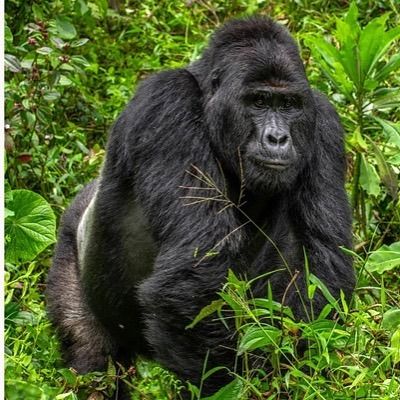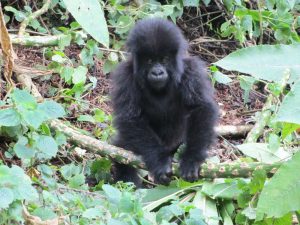Gorilla Trekking for Avid Travelers
Gorilla Trekking for Avid Travelers. For avid travelers seeking a truly unforgettable and immersive wildlife experience, gorilla trekking in the heart of Africa is the ultimate adventure. Trekking through dense rainforests to encounter one of the planet’s most endangered and majestic creatures—the mountain gorilla—offers a deep connection with nature and a unique form of wildlife conservation tourism. Whether you’ve explored remote destinations across the globe or are simply passionate about rare wildlife encounters, gorilla trekking promises to be an experience like no other.
This guide covers everything you need to know about gorilla trekking, including the best destinations, preparation tips, and what makes this adventure so special for experienced travelers.
Why Gorilla Trekking Is a Must for Avid Travelers
- Exclusive Wildlife Encounter: Unlike a typical safari, gorilla trekking allows you to observe critically endangered mountain gorillas in their natural habitat. With only around 1,000 mountain gorillas left in the wild, this is one of the rarest and most intimate wildlife experiences.
- Adventure in Pristine Forests: Trekking to see gorillas is not for the faint-hearted. It involves hiking through dense, misty rainforests, often on rugged, muddy, and steep terrain. It’s a challenge that rewards adventurers with the chance to spend precious time observing gorillas in their remote, undisturbed environments.
- Off-the-Beaten-Path Destinations: Gorilla trekking takes place in Uganda, Rwanda, and the Democratic Republic of Congo (DRC)—all destinations that offer rich biodiversity, stunning landscapes, and vibrant cultures. Avid travelers who seek experiences far from the typical tourist trail will find these locations exciting and full of discovery.
- Contribution to Conservation: Trekking permits are expensive, but the cost contributes to the protection of mountain gorillas and their habitats. By taking part in a trek, you’re supporting crucial conservation efforts and the local communities that coexist with the gorillas.
Best Gorilla Trekking Destinations
For seasoned travelers, deciding where to go for gorilla trekking is crucial, as each destination offers something unique:
1. Uganda: Bwindi Impenetrable Forest & Mgahinga Gorilla National Park
- Bwindi Impenetrable National Park: Known for its dense vegetation and mystical atmosphere, Bwindi is home to almost half of the world’s remaining mountain gorillas. The park offers a more challenging trekking experience with rugged terrain and steep hills.
- Mgahinga Gorilla National Park: A less crowded alternative to Bwindi, Mgahinga shares the Virunga Mountains with Rwanda and the DRC. It offers an incredible landscape with towering volcanoes and a more intimate trekking experience.
What Makes Uganda Special:
- Gorilla permits in Uganda are relatively affordable compared to Rwanda ( $800 USD per permit).
- Uganda also offers rich biodiversity and opportunities for chimpanzee tracking and classic safaris in nearby parks like Queen Elizabeth National Park.
2. Rwanda: Volcanoes National Park
Rwanda’s Volcanoes National Park is world-renowned for its gorilla trekking, made famous by Dian Fossey and her pioneering work with gorilla conservation.
- Luxury Trekking Experience: Rwanda is known for its high-end trekking experience, with luxury lodges, excellent infrastructure, and first-class guides.
- Easier Trekking: The treks tend to be less strenuous than in Uganda due to better-maintained trails, though it still offers thrilling moments of adventure.
What Makes Rwanda Special:
- Rwanda is ideal for those seeking a luxury wildlife experience combined with a shorter trekking duration. Gorilla permits cost $1,500 USD, but the experience is unparalleled.
- Proximity to Kigali International Airport makes Volcanoes National Park one of the most accessible trekking destinations for time-sensitive travelers.
3. Democratic Republic of Congo (DRC): Virunga National Park
The DRC offers gorilla trekking in the famous Virunga National Park, home to both mountain gorillas and the lowland gorillas in Kahuzi-Biega National Park.
- Authentic Wilderness: Virunga is one of Africa’s most raw and untouched national parks, providing a more rugged and adventurous experience than Uganda or Rwanda.
- Nyiragongo Volcano: Many travelers combine gorilla trekking with a hike up Mount Nyiragongo, one of the world’s most active volcanoes, featuring a glowing lava lake at its summit.
What Makes DRC Special:
- The DRC is the perfect destination for travelers seeking an off-the-beaten-path adventure. Permits are cheaper (around $450 USD), but it comes with more logistical and safety challenges due to the region’s political instability.
- The combination of gorillas and volcanic landscapes makes the DRC a compelling destination for thrill-seekers.
How to Prepare for Gorilla Trekking
For experienced travelers, preparation for a gorilla trek involves understanding the physical demands, getting the right gear, and being mindful of conservation efforts.
1. Physical Fitness
Gorilla trekking can be physically challenging. Treks may last from 2 to 8 hours through steep, muddy terrain and thick forests. Prepare by:
- Training: Do regular hikes and aerobic exercises leading up to your trip to build endurance.
- Altitude Acclimatization: The trekking areas are at high altitudes (over 2,000 meters), so be prepared for thinner air. Arrive a few days early to acclimatize.
2. What to Pack
Packing the right gear is essential for a comfortable trek. Here’s what experienced travelers should include:
- Hiking Boots: Sturdy, waterproof boots with ankle support are critical for navigating rugged terrain.
- Lightweight Rain Gear: Weather is unpredictable in the rainforest, so a quality waterproof jacket and pants are essential.
- Layered Clothing: Wear moisture-wicking layers to adapt to varying temperatures during the trek.
- Garden Gloves: These will protect your hands when grabbing onto trees and vines.
- Insect Repellent and Sun Protection: Rainforests can be buggy, so bring a strong repellent, as well as a hat and sunscreen.
- Water and Snacks: Trekking is demanding, so carry plenty of water and energy-boosting snacks.
3. Booking Your Gorilla Trek
As an avid traveler, you likely know the importance of booking in advance for high-demand experiences. Gorilla trekking permits are limited and can sell out months ahead, particularly during peak seasons.
- Permits: Book your gorilla trekking permit as soon as you know your travel dates. Uganda and Rwanda offer online permit booking, or you can work with a reputable tour operator.
- Tour Operators: If you prefer a curated experience, many tour operators offer complete packages that include transportation, accommodation, and trekking permits. Look for operators focused on sustainable and eco-friendly practices.
Ethical and Sustainable Considerations
For experienced travelers who are mindful of their impact on the environment, gorilla trekking is a form of conservation tourism. The high cost of permits directly funds gorilla protection efforts, habitat preservation, and local community projects.
- Respect the Gorillas: Always follow your guide’s instructions, maintain a safe distance from the gorillas (about 7 meters), and avoid behaviors that could stress or endanger the animals.
- Support Local Communities: Consider staying in lodges that employ local staff and source materials sustainably. Engaging in cultural experiences, such as visiting the Batwa pygmy communities, helps boost local economies.
Combining Gorilla Trekking with Other Adventures
As an avid traveler, you’re likely keen to maximize your trip. Luckily, gorilla trekking destinations in Uganda, Rwanda, and the DRC offer incredible additional activities:
- Wildlife Safaris: In Uganda, explore Queen Elizabeth National Park, Murchison Falls, or Kibale Forest for a chance to see elephants, lions, chimpanzees, and other iconic wildlife.
- Volcano Hikes: For adventurous travelers, consider hiking one of the Virunga volcanoes or scaling the famous Nyiragongo Volcano in the DRC.
- Cultural Immersion: Experience traditional Rwandan or Ugandan culture through local village tours, craft workshops, or community-based tourism initiatives.
Final Thoughts
For avid travelers, gorilla trekking is a thrilling adventure that combines physical challenge, rare wildlife encounters, and the opportunity to contribute to conservation. Whether you trek in Uganda’s misty forests, Rwanda’s volcanic slopes, or the raw wilderness of the DRC, this experience will stand out as one of the most memorable moments of your travel journey.
Plan ahead, prepare for the challenge, and embrace the incredible beauty of Africa’s mountain gorillas in their natural habitat—this is an adventure worth every step.




